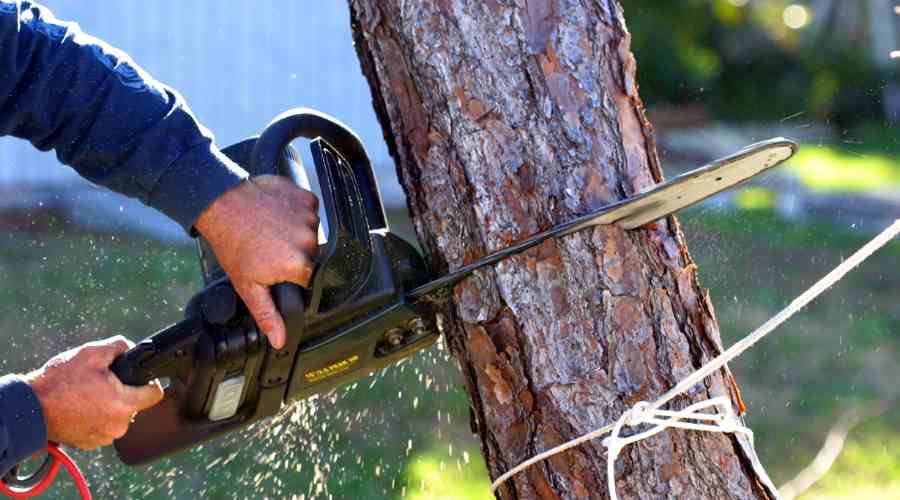Reasons You May Need to Remove Trees on Your Property
Knowing When Trees Must Go
Removing a tree, especially a large, mature one, is a big decision that should not be taken lightly. However, there are times when tree removal does become necessary. Here are some of the most common reasons homeowners choose to cut down trees on their property.
1. Dead or Dying Trees
If a tree is dead or dying from disease, fungus, pests, or other factors, removal may be the best option. Leaving them standing poses safety hazards as branches or the entire tree could fall.
Trees that have already died are more prone to falling since the wood is brittle and decaying.
Some signs a tree is dying include sparse foliage, dead branches, cracks or splits in the trunk or bark, fungus growth, and evidence of pests.
2. Dangerous Trees
Trees that pose a threat to property or safety should be removed. Warning signs include:
- Leaning trunks
- Damaged or cracked branches
- Excessive hanging branches over your home.
- Branches or roots interfering with electrical lines or underground utilities
Even if a hazardous tree appears healthy overall, it pays to remove it before damage occurs. Storms or high winds could cause it to finally topple.
3. Wildfire Prevention
In fire-prone areas, dense trees surrounding a home increase wildfire risk significantly. Thinning trees helps create a fire break. Specific trees to focus removal efforts on include: Highly flammable pine, evergreen, eucalyptus, acacia and fir trees, dead trees, and smaller growing between larger trees.
Create at least a 30 foot buffer between trees and remove ladder fuels like brush and debris below them.
4. Tree Roots Causing Foundation Damage
Tree roots that wrap around or grow under home foundations can cause extensive structural damage including:
- Shifted, cracked or settling foundation
- Downspout flooding due to root blockages
- Buckling sidewalks or driveways from under-the-surface root growth
- Doors and windows that stick or won’t open properly
Tree removal alleviates the root pressure and prevents further destruction. Severing problem roots is only a temporary fix since they will continue growing back.
5. Severely Storm Damaged Trees
Trees severely damaged by storms pose immediate hazards and can lead to long-term decay and disease if left untreated. Warning signs include:
- Tipped trees
- Trunk snapped in half
- Major limbs broken
- Large wounds and exposed wood
- Peeling bark
Removing severely damaged trees prevents safety issues. It also gives the opportunity to plant a healthy, correctly-positioned replacement tree.
6. Diseased Trees Negatively Impacting Nearby Trees
Leaving a sick tree in place allows diseases like: Dutch elm disease, Chestnut blight, Pine wilt nematodes.
To spread to surrounding trees via roots or shared pollinators. These pests quickly multiply, making the problem exponentially worse over time. Remove any infected trees immediately to avoid epidemics.
7. Ordered by The Council or Utility Company
The local council or utility company orders homeowners to remove trees, typically for one of these reasons:
- Tree roots damaging nearby roads, curbs, sidewalks or sewer/water lines
- Branches interfering with overhead power lines
- Disease risk to other trees in the area
- High fire danger
- Street widening or other infrastructure projects
Failure to comply with official tree removal orders may result in fines or the local authorities removing the tree at the property owner’s expense.
How to Get Council Approval to Remove Trees
Most tree removal requires approval from local councils if:
- Tree trunk circumference exceeds certain size limits
- Tree is designated “significant” by the council
- Species of tree is classified “protected”
Follow these steps when seeking council tree removal approval:
| Step | Instructions |
| 1. | Determine if the tree meets removal criteria per local regulations |
| 2. | Hire an arborist to assess tree health if unsure |
| 3. | Submit an application to the council |
| 4. | Allow 6-8 weeks for the approval process |
Provide as much supporting documentation as possible with your request, like arborist reports, photos of damage, infrastructure repair bids, etc.
In Summary
As we have explored in this article, there are many scenarios that necessitate removing trees to protect people, property, other nearby trees and more. Homeowners should follow local ordinances and get any required permits or approvals before cutting down protected tree species or above a certain size.
Consulting an arborist for their expert assessment is also highly recommended whenever you consider tree removal. Scenarios covered where active removal is warranted include dealing with dead or dying trees, dangerous, wildfire prevention, foundation damage, storm damage, disease risk, and orders from local authorities.
Taking the proper precautions and addressing these tree issues promptly prevents bigger problems down the road.


